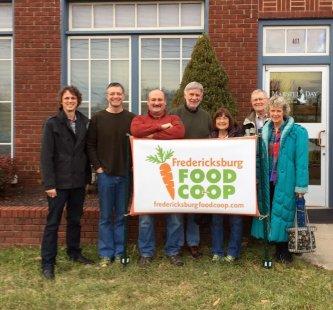Editorial: With Some Patience, Food Co-op Will Come

Patience and momentum don’t go together very well when the objective is clear and progress is being made, but the timetable says years.
Good things come to those who wait, the saying goes. But a taste of progress usually brings with it a desire to accelerate that progress, lest any momentum begin to subside.
It is the blending of patience and momentum that will eventually bring success to the Fredericksburg Food Cooperative. To make sure that happens, the effort and those behind it should continue to receive the community’s support until opening day for the co-op’s store arrives.
The co-op idea is the brainchild of its director and board chairman Rich Larochelle, who brings with him a solid understanding of how co-ops operate. It also helps that the food co-op idea is not new. In Virginia alone, there are two established co-ops and a few others like Fredericksburg’s that are in the works.
The idea behind a food cooperative is to provide a central location where farmers can market their harvests and residents can have access to fresh local food all year long. It not only helps sustain local agriculture, but the food it provides is fresh and healthy, and has not been shipped long distances by trucks that drink fuel and belch pollution.
Following a formula that has brought success to existing cooperatives in Roanoke and Harrisonburg, the Fredericksburg group will not settle on a location until it reaches 800 paying members, and won’t open a store until it has 1,000 members.
A lifetime membership costs $200, and the local group has signed up close to 350 members since getting under way in September 2015. If the cooperative can sustain the 275 membership growth it saw in 2016, those thresholds are certainly in reach of the three- to five-year time frame for establishing a location.
In the meantime, there is plenty of work to be done. Having reached the 300-member mark, the group has called on CDS Consulting Cooperative to conduct a formal market study that will gauge the community’s interest in a food cooperative. Being interested in such a positive movement is easy. That interest, however, will need to come with some form of commitment, whether it’s buying a membership or vowing to become a consistent co-op shopper.
The study will also provide a reality check on local demographics. Are the people here similar in terms of education and income to those in other areas where co-ops have been successful, and are there enough of them? The expenses for such early phase activities are paid for with donations—not membership funds.
The popularity of farmers markets here suggests area residents are enthused about eating fresh, local food and are willing to make what is likely an extra stop to get it. The participation of farmers in those markets suggests they are ready and willing to support the cooperative idea.
The cooperative board is already looking around for possible locations. It will need to be around 10,000 square feet—half the size, give or take, of a typical area supermarket. Organizers envision the co-op as a full-service grocery store with a café and space to host educational events that “strengthen the connection between farmers and community and share best practices on health and nutrition,” Larochelle said.
It would need to be in a central location in a fairly densely populated area, which suggests a downtown site or possibly in a shopping center with available space and parking. Perhaps the co-op could contribute to the revitalization of a commercial area that needs it.
As it stands, the food cooperative initiative appears to be where it wants and needs to be. The organizers, farmers, new members and prospective customers can feel the momentum, but will need to be patient and remain optimistic as a co-op store moves closer to reality.
We understand that for many residents and farmers, that reality can’t come quickly enough.
February 1, 2017 – by the editorial board of the Freelance Star







